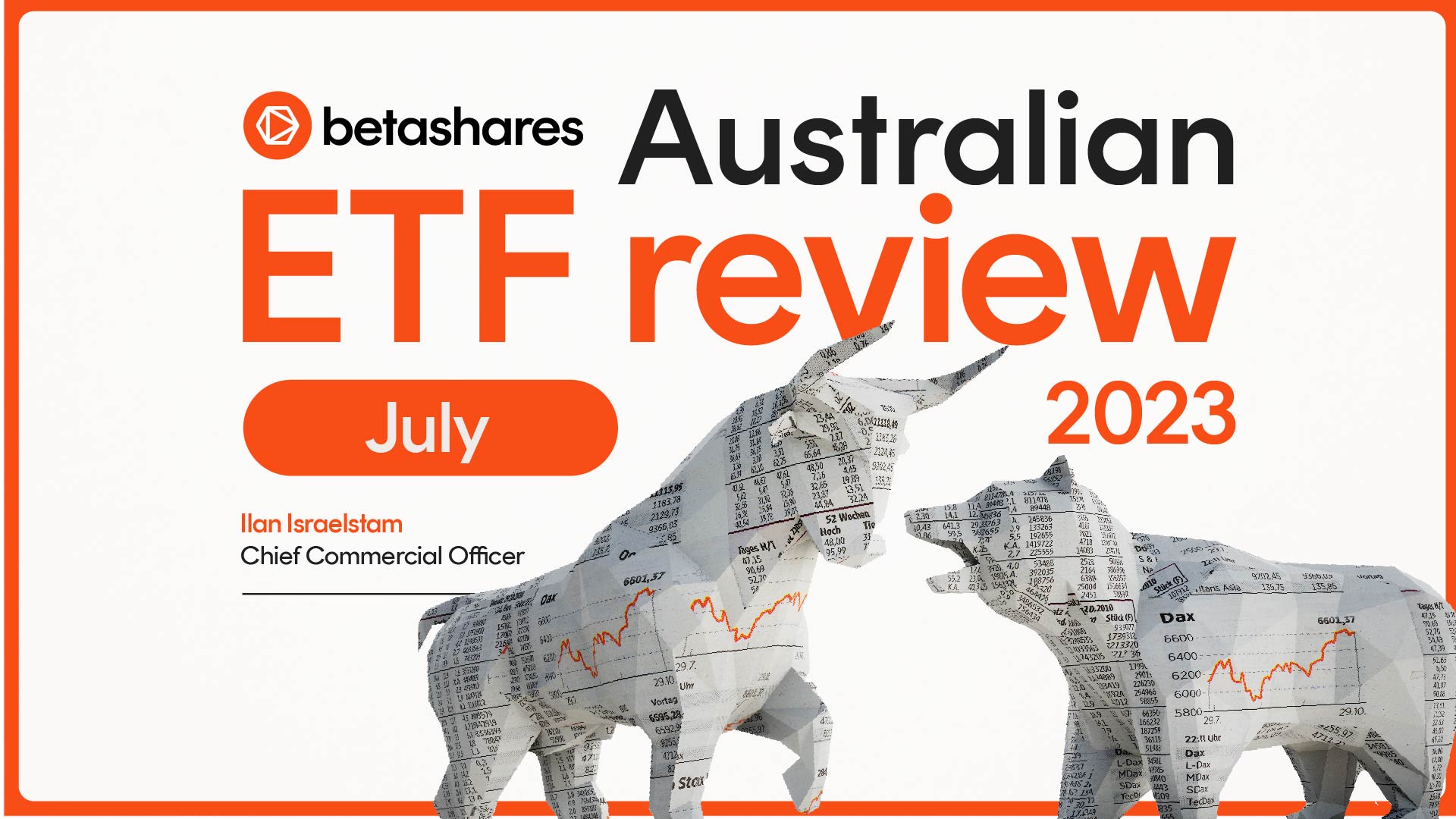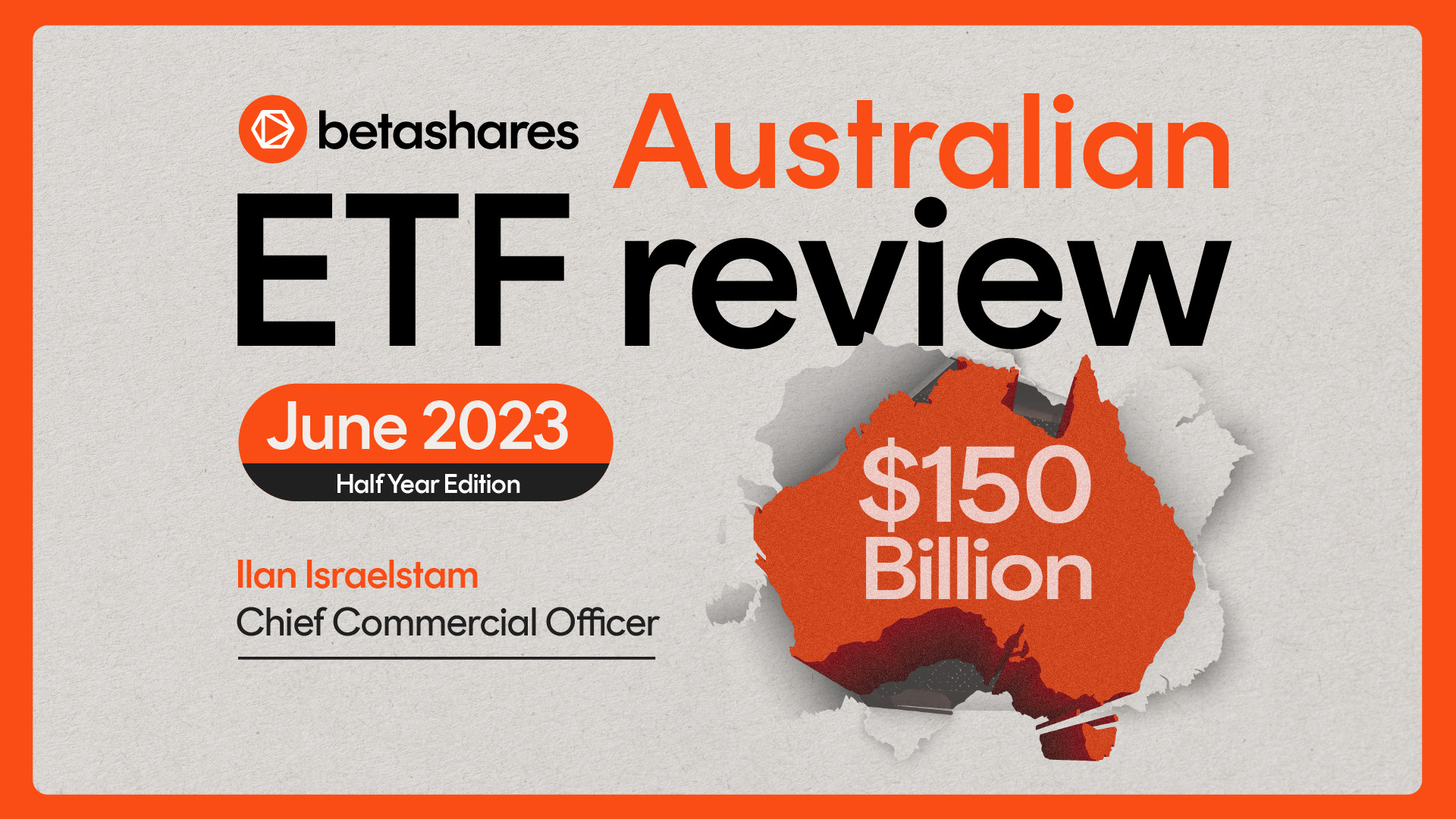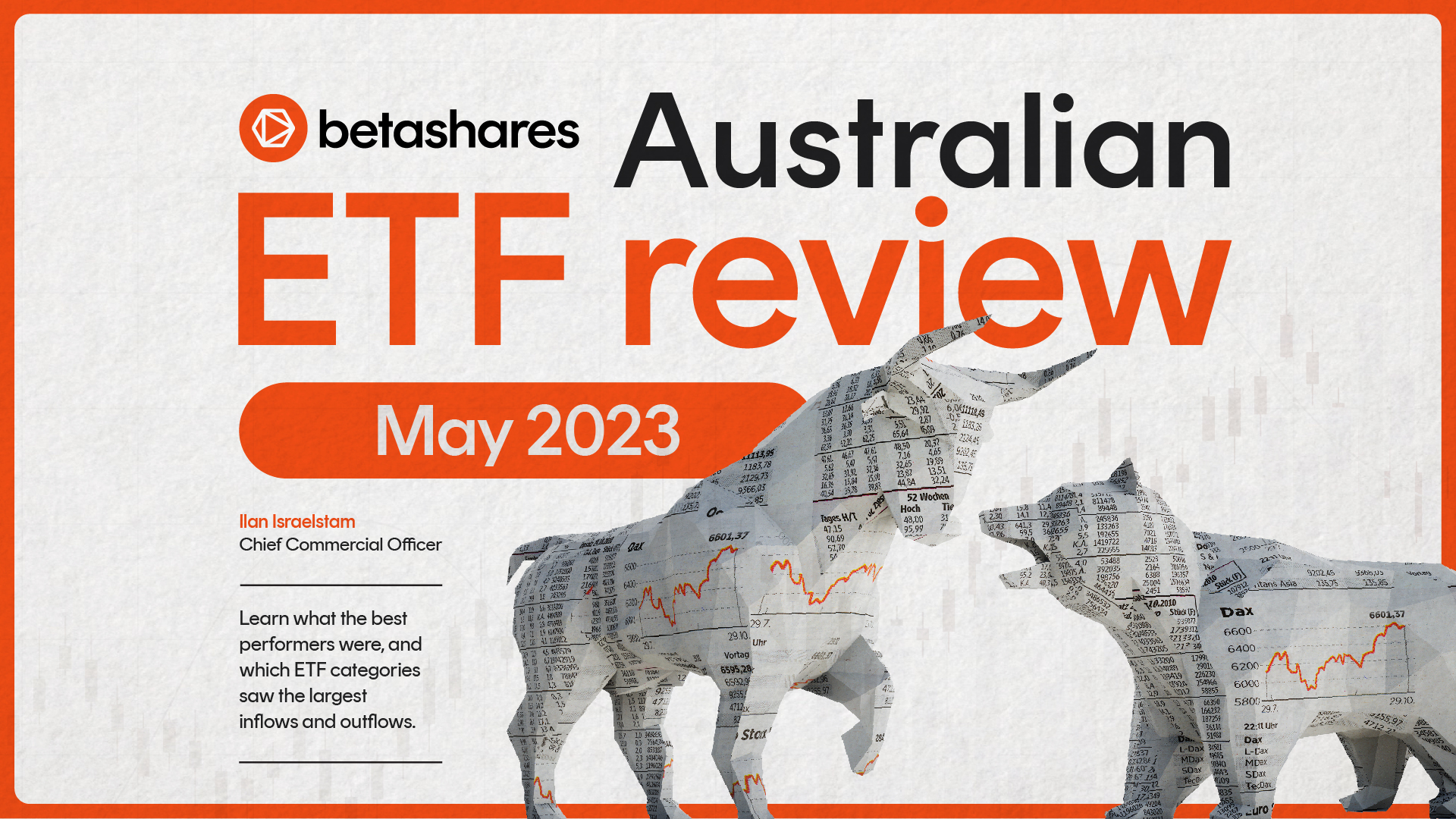Betashares Australian ETF Review: July 2023
3 minutes reading time
September 2023 Review: Industry declines in value as markets fall, while flows remain strong
The second highest net flows of the calendar year were not enough to combat a decline in asset values, as global sharemarket falls caused the industry to decline in September
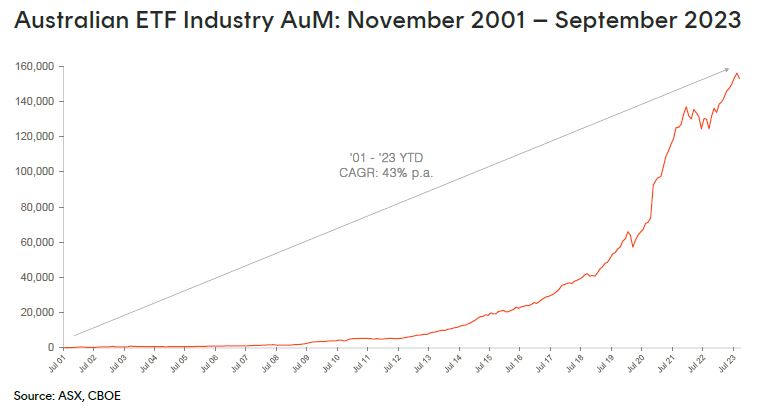
Exchanged Traded Funds Market Cap
• Australian Exchange Traded Funds Market Cap (ASX + CBOE): $152.9B
• ASX CHESS Market Cap: $137.9B1
• Market Cap increase for month: -2.0%, -$3.1B
• Market Cap growth for last 12 months: 22.9%, $28.5B
New Money
• Net inflows for month: $1.7B – 2nd highest inflows for 2023 to date
Products
• 350 Exchange Traded Products trading on the ASX & CBOE
• Nine new ETFs launched: Betashares launched two US Treasury Bond ETFs including the first
UTIP
Inflation-Protected U.S. Treasury Bond Currency Hedged ETF
and a
US10
U.S. Treasury Bond 7-10 Year Currency Hedged ETF
; the ASX had a further 5 ETF launches in the Government Bond & thematic space by VanEck, Global X and iShares. 2 new funds were launched on CBOE – Active ETFs from Coolabah Capital (Active short term bonds) and JPMorgan (Active Emerging Markets equity)
• 1 XTB single bond exposure was closed
Trading Value
• After very high levels of trading value last month, trading value dropped back by ~20% in September, with ASX trading value of $9B for the month
Performance
•
URNM
Global Uranium ETF
was the best performing product for the second month in a row, rising an additional 24% (after the ~15% rise last month). With sharp falls in the US sharemarket in September, geared short US equities exposures such as
BBUS
US Equities Strong Bear Currency Hedged Complex ETF
performed strongly (~13% for the month)
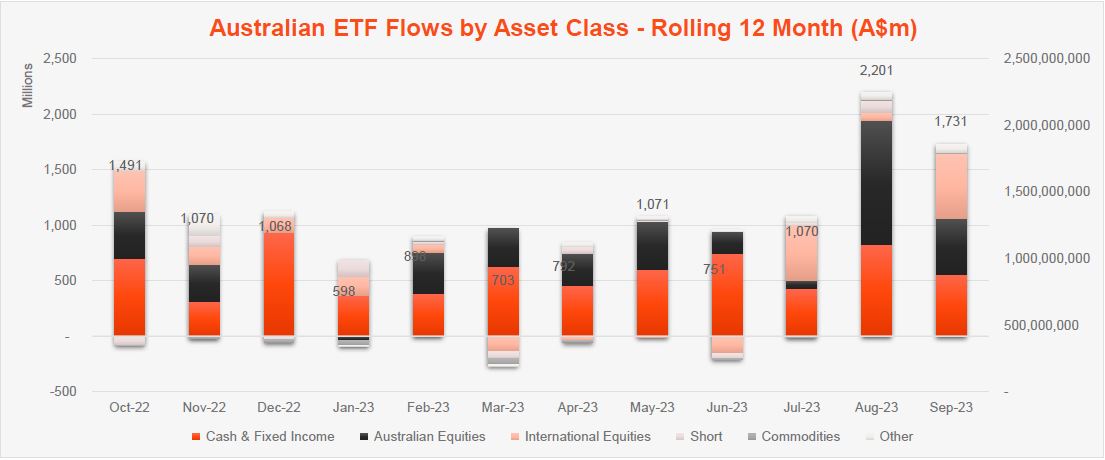
Source: ASX, CBOE
Top 5 category inflows (by $) – September 2023
| Broad Category | Inflow Value |
| International Equities | $582,641,062 |
| Australian Equities | $508,148,070 |
| Fixed Income | $475,245,385 |
| Cash | $78,162,605 |
| Multi-Asset | $43,254,425 |
Comment: For only the second time in the last 12 months, we saw a return to meaningful inflows in the International equities ETF segment, which was the highest category for new money ($583m). Australian equities also had strong inflows ($508m), and it appears as though ETF investors are making a return to equity investing after focusing heavily on Fixed Income exposures for the majority of the year to date.
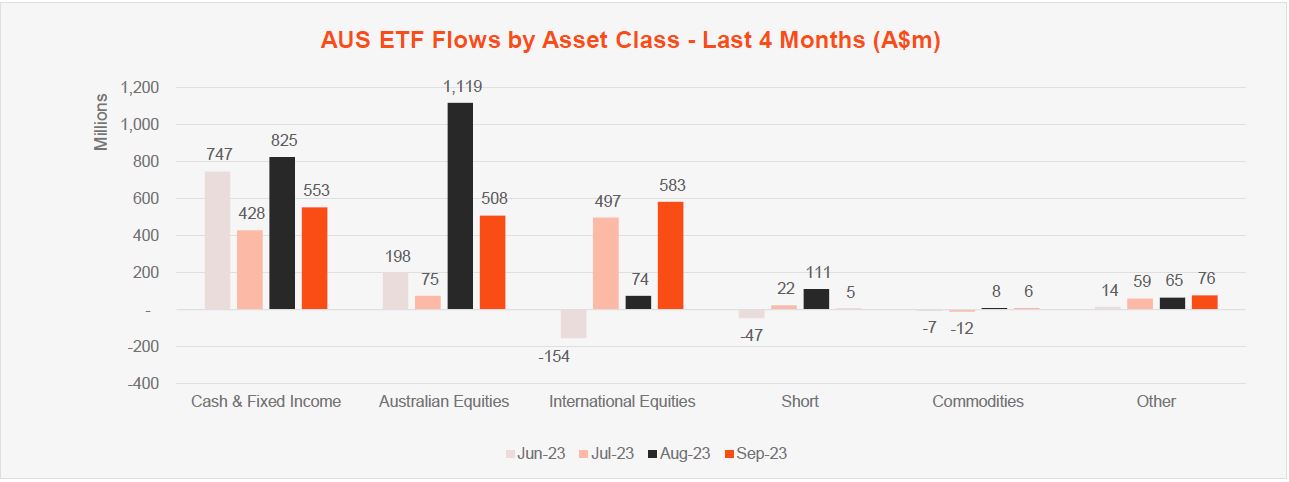
Source: ASX, CBOE
Top sub-category inflows (by $) – September 2023
| Sub-category | Inflow Value |
| Australian Equities – Broad | $408,422,025 |
| Australian Bonds | $289,369,893 |
| International Equities – Developed World | $253,281,657 |
| International Equities – US | $213,222,231 |
| Global Bonds | $175,619,140 |
Top sub-category outflows (by $) – September 2023
| Sub-Category | Inflow Value |
| Australian Equities – Large Cap | ($43,527,379) |
| Australian Equities – Short | ($19,421,259) |
| Oil | ($15,717,460) |
| International Equities – E&R – ESG Lite | ($8,595,741) |
| Other | ($6,285,448) |
Comment: Like last month, there were very little outflows at a category or sub-category level this month, with ETF investors largely choosing to hold or add to their positions, in aggregate.
*Past performance is not an indicator of future performance.
1. Since February 2023, the ASX started reporting additional data on a CHESS-only basis. The primary use of such data is that it excludes, amongst other things, the FuM and Flows in ‘dual class’ Active ETFs and potentially provide a more accurate picture of exchange traded activity.

